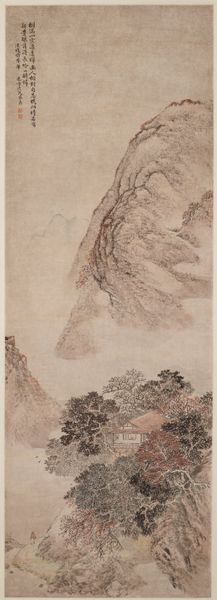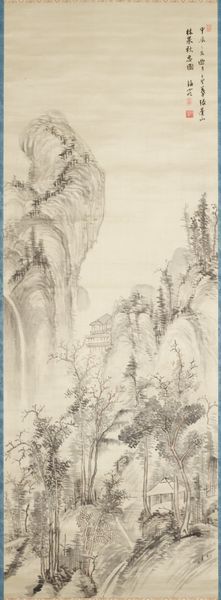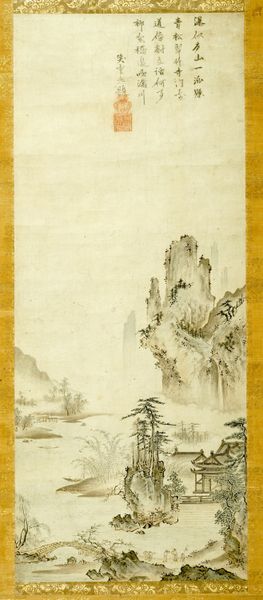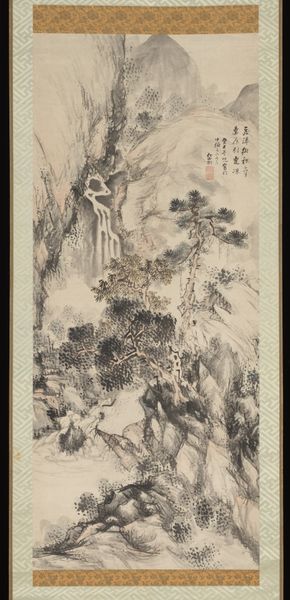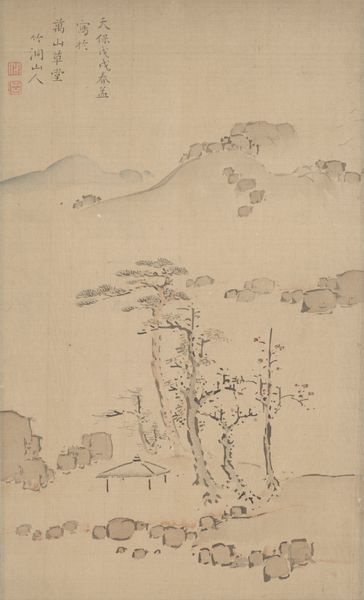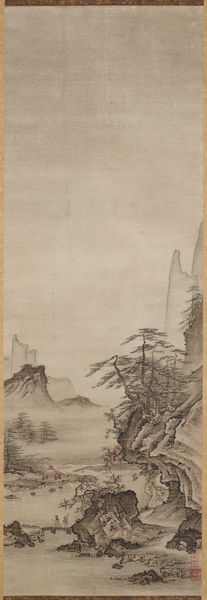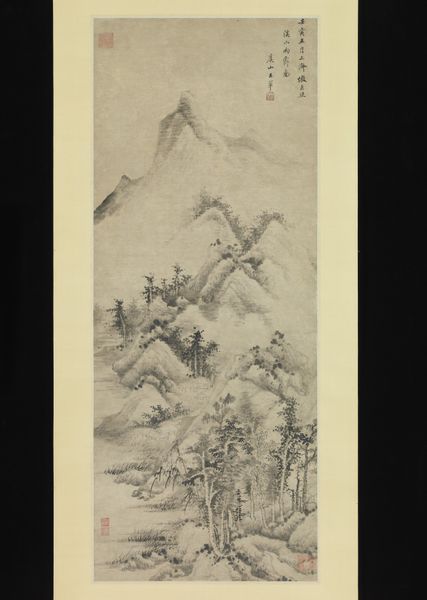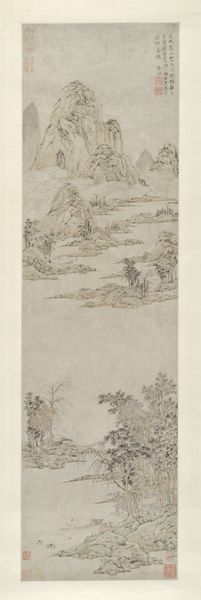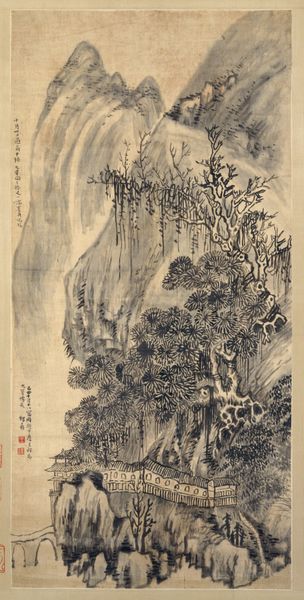
drawing, paper, hanging-scroll, ink
#
drawing
#
asian-art
#
landscape
#
figuration
#
paper
#
hanging-scroll
#
ink
#
china
#
line
Dimensions: 52 7/8 x 24 1/2 in. (134.3 x 62.23 cm) (sheet)
Copyright: Public Domain
"Riding in the Mountains" was made with ink on paper by Zhang Hong, who lived from 1577 to 1652. During the Ming Dynasty, landscape painting was more than just scenery; it reflected philosophical ideas and social values. In this painting, the mountains represent stability and order, values that the ruling class upheld. The rider suggests a journey, perhaps a metaphor for life's path or a scholar's quest for knowledge and social position. The artist's style and technique also tell a story. Notice the brushstrokes; they reflect the artist's personal expression but also the artistic conventions of the time. Calligraphy and seals were integral parts of the composition, further embedding the artwork in the cultural context of Ming China. By examining paintings like this through the lens of history, we can uncover insights into the beliefs, aspirations, and social structures of the Ming Dynasty. Resources like historical texts, biographies of artists, and studies of Ming society can help us to understand the complex interaction of art and culture.
Comments
minneapolisinstituteofart almost 2 years ago
⋮
Born in Suzhou in 1577, during the full ascendency of the Wu school, the artistic temperament of Zhang Hong was undoubtedly affected by the literati painters around him. While he worked mainly in the literati tradition favored by the Wu school, he earned his living as a professional painter. Zhang's landscape paintings fall into two categories: those with complex composition and detailed brushwork and those with sparse compositions like this work composed with spontaneous strokes. In what is a conventional theme of a scholar making his way along a mountain road on horseback, the artist has gone beyond mimicking outer appearances to create a rather ominous distortion of natural images. Zhang has manipulated the basic compositional elements to impart the majesty of the mountain scenery the scholar is experiencing.While professional painting was effectively marginalized by critics like Dong Qichang(1555-1636), markets for professional-style painting persisted even in cultured cities like Suzhou. Zhang Hong found profit in catering to a less educated, more middle-class clientele by producing hybrid works that combined literati themes with professional brush techniques and flourishes.
Join the conversation
Join millions of artists and users on Artera today and experience the ultimate creative platform.
